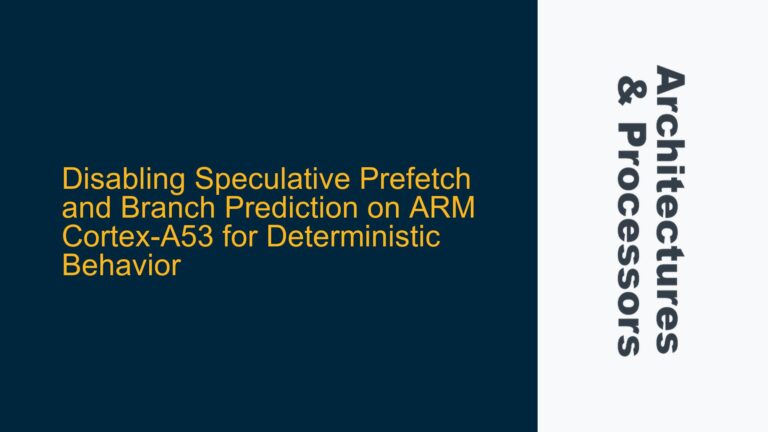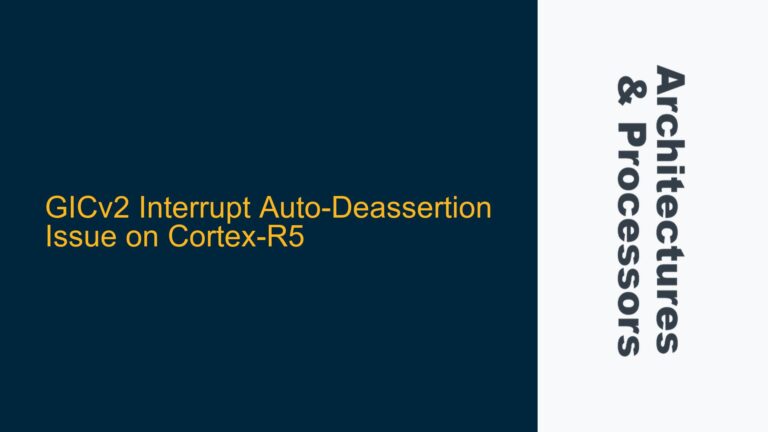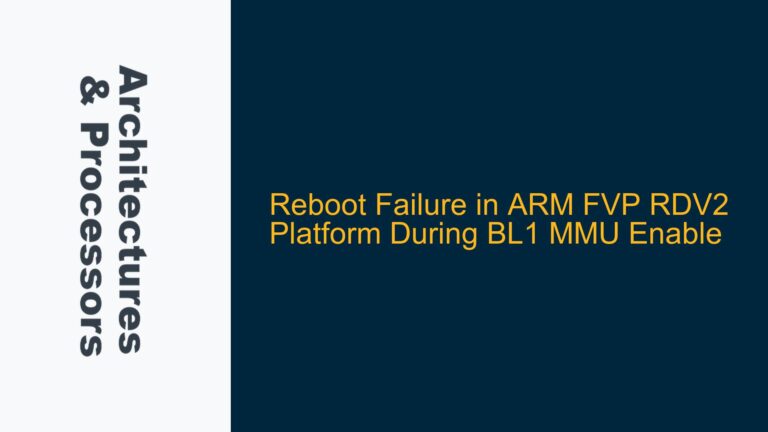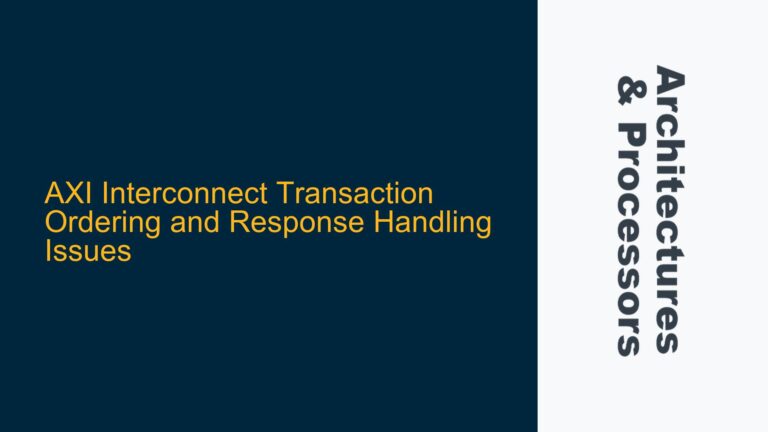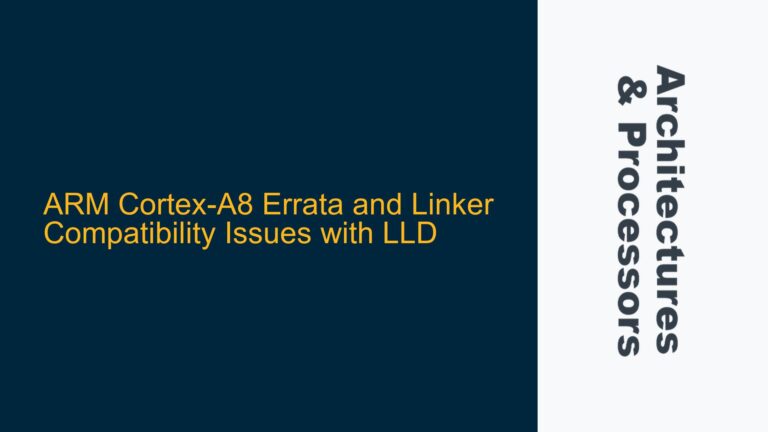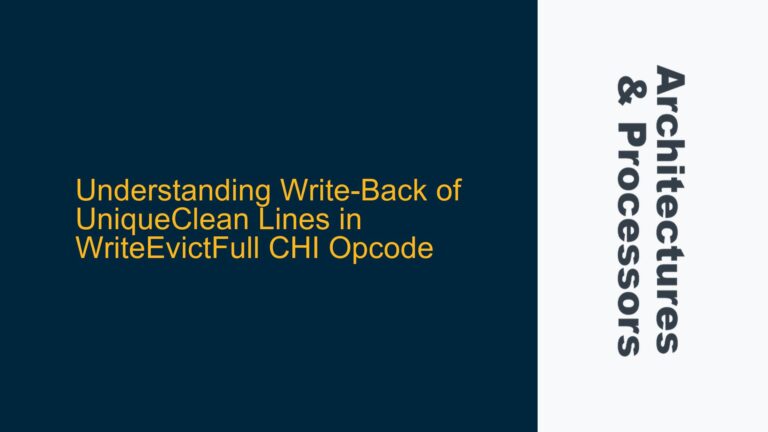Cortex-A7 Boot from SPI NOR: Understanding the Boot Process and XIP Limitations
The Cortex-A7 processor, as part of the ARMv7-A architecture, is widely used in embedded systems due to its balance of performance and power efficiency. One common use case involves booting from external SPI NOR flash memory, which is a cost-effective and space-efficient solution for many applications. However, the ability to execute code directly from SPI NOR flash, known as Execution In Place (XIP), is not always straightforward. This post delves into the intricacies of booting from SPI NOR flash on the Cortex-A7, the challenges associated with XIP, and the potential solutions to these challenges.
Cortex-A7 Boot Process from SPI NOR Flash
The Cortex-A7 processor typically boots from an external SPI NOR flash memory by loading the initial boot code into RAM and then executing it from there. This process is facilitated by the boot ROM, which is hardwired into the processor and is responsible for initializing the system and loading the bootloader or firmware from the external memory. The boot ROM reads the first few kilobytes of data from the SPI NOR flash, which contains the initial bootloader, and then transfers control to this bootloader.
The bootloader, once loaded into RAM, is responsible for further initializing the system, setting up the memory map, and loading the operating system or application code into RAM. This approach is commonly used because it allows for faster execution of code compared to executing directly from SPI NOR flash, which is inherently slower due to its serial nature.
Challenges with Execution In Place (XIP) from SPI NOR Flash
Execution In Place (XIP) refers to the ability to execute code directly from the memory where it is stored, without the need to copy it to RAM first. While XIP can be beneficial in terms of memory efficiency, it presents several challenges when using SPI NOR flash with the Cortex-A7 processor.
Serial Nature of SPI NOR Flash
SPI NOR flash is a serial memory device, meaning that data is transferred one bit at a time over a serial interface. This serial nature inherently limits the speed at which data can be accessed, making it significantly slower than parallel NOR flash or RAM. When executing code directly from SPI NOR flash, the processor must wait for each instruction to be fetched serially, which can lead to substantial performance bottlenecks.
Page and Erase Sizes
SPI NOR flash memory is organized into pages and sectors, with typical page sizes ranging from 64 bytes to 256 bytes, and erase sizes ranging from 4 KB to 64 KB. This organization poses a challenge for XIP because modifying a small portion of the code or data (e.g., a single variable) may require erasing and rewriting an entire sector. This process is time-consuming and can disrupt the execution flow, making it impractical for real-time applications.
Memory Mapping and Address Space
For XIP to be feasible, the SPI NOR flash memory must be memory-mapped into the processor’s address space. This means that the processor can access the flash memory as if it were part of its own memory, allowing for direct execution of code. However, not all Cortex-A7 implementations support memory mapping of SPI NOR flash, and even when they do, the address space available for memory mapping may be limited. This limitation can restrict the size of the code that can be executed in place and may require careful management of the memory map.
Addressing XIP Challenges: Implementing Data Synchronization and Cache Management
Given the challenges associated with XIP from SPI NOR flash, it is often more practical to load the code into RAM and execute it from there. However, if XIP is a requirement, there are several strategies that can be employed to mitigate the challenges and improve performance.
Data Synchronization Barriers
One of the key challenges with XIP is ensuring that the processor has access to the most up-to-date data and instructions. This is particularly important when the SPI NOR flash is being written to or modified. Data synchronization barriers, such as the Data Synchronization Barrier (DSB) and Instruction Synchronization Barrier (ISB) in the ARM architecture, can be used to ensure that all memory accesses are completed before proceeding with the execution of subsequent instructions. These barriers help to prevent the processor from executing stale or outdated instructions, which can lead to unpredictable behavior.
Cache Management
Another strategy for improving XIP performance is to use the processor’s cache effectively. The Cortex-A7 processor includes a Level 1 (L1) cache for both instructions and data, which can significantly speed up access to frequently used code and data. By enabling and properly configuring the cache, the processor can reduce the number of accesses to the slower SPI NOR flash, improving overall performance. However, cache management must be carefully handled to ensure that the cache does not contain stale data, particularly when the SPI NOR flash is being modified.
Memory Mapping and Address Space Management
If the Cortex-A7 implementation supports memory mapping of SPI NOR flash, it is important to carefully manage the address space to ensure that the code and data are accessible to the processor. This may involve configuring the memory controller to map the SPI NOR flash into the processor’s address space and ensuring that the memory map is consistent with the requirements of the application. Additionally, the use of memory protection units (MPUs) can help to prevent unauthorized access to critical regions of the memory map, enhancing the security and reliability of the system.
Optimizing Code for XIP
Finally, optimizing the code for XIP can help to mitigate some of the performance challenges associated with executing directly from SPI NOR flash. This may involve minimizing the number of memory accesses, using efficient data structures, and avoiding operations that require frequent modifications to the code or data. Additionally, the use of compression techniques can reduce the size of the code, making it more feasible to execute from the limited address space available for memory-mapped SPI NOR flash.
Conclusion
Booting from SPI NOR flash on the Cortex-A7 processor presents several challenges, particularly when it comes to Execution In Place (XIP). The serial nature of SPI NOR flash, combined with its page and erase sizes, makes it difficult to achieve the performance and flexibility required for many applications. However, by understanding the boot process, addressing the challenges associated with XIP, and implementing strategies such as data synchronization barriers, cache management, and memory mapping, it is possible to achieve a reliable and efficient system. While XIP from SPI NOR flash may not be the ideal solution for all applications, careful design and optimization can make it a viable option in certain scenarios.

